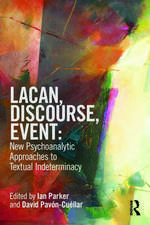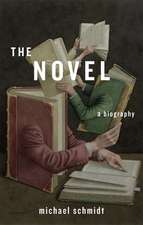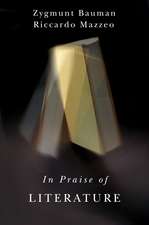The Cognitive Humanities: Embodied Mind in Literature and Culture
Editat de Peter Garratten Limba Engleză Hardback – 19 dec 2016
| Toate formatele și edițiile | Preț | Express |
|---|---|---|
| Paperback (1) | 693.90 lei 6-8 săpt. | |
| Palgrave Macmillan UK – 20 iul 2018 | 693.90 lei 6-8 săpt. | |
| Hardback (1) | 698.15 lei 6-8 săpt. | |
| Palgrave Macmillan UK – 19 dec 2016 | 698.15 lei 6-8 săpt. |
Preț: 698.15 lei
Preț vechi: 821.35 lei
-15% Nou
Puncte Express: 1047
Preț estimativ în valută:
133.60€ • 138.03$ • 111.13£
133.60€ • 138.03$ • 111.13£
Carte tipărită la comandă
Livrare economică 19 martie-02 aprilie
Preluare comenzi: 021 569.72.76
Specificații
ISBN-13: 9781137593283
ISBN-10: 1137593288
Pagini: 224
Ilustrații: XVII, 259 p. 4 illus. in color.
Dimensiuni: 148 x 210 x 21 mm
Greutate: 0.45 kg
Ediția:1st ed. 2016
Editura: Palgrave Macmillan UK
Colecția Palgrave Macmillan
Locul publicării:London, United Kingdom
ISBN-10: 1137593288
Pagini: 224
Ilustrații: XVII, 259 p. 4 illus. in color.
Dimensiuni: 148 x 210 x 21 mm
Greutate: 0.45 kg
Ediția:1st ed. 2016
Editura: Palgrave Macmillan UK
Colecția Palgrave Macmillan
Locul publicării:London, United Kingdom
Cuprins
Chapter 1.The Cognitive Humanities; Peter Garratt.- Part I. Theorizing the Embodied Mind.- Chapter 2. Enactive Cognition and Fictional Worlds; Merja Polvinen.- Chapter 3. The Opacity of Fictional Minds; Marco Bernini.- Chapter 4. ‘Un-Walling’ the Wall; Barbara Dancygier.- Chapter 5. Textures of Thought; Teemu Paavolainen.- Part II. Reading Culture.- Chapter 6. Extending the Renaissance Mind; Miranda Anderson.- Chapter 7.‘Her Silence Flouts Me’; Laura Seymour.- Chapter 8. From World to Worldview; Michael Sinding.- Part III. Cognitive Futures.- Chapter 9. Bayesian Bodies; Karin Kukkonen.- Chapter 10. Emergences; Nigel McLoughlin.- Chapter 11. Autism in the Wild; Nicola Shaughnessy and Melissa Trimingham.- Chapter 12. Hardware, Software, Wetware; Matt Hayler.- Bibliography.
Recenzii
“The Cognitive Humanities is an edited collection of eleven essays from across the humanities, including literary studies, linguistics, theatre and performance studies, philosophy and history. … this volume will absolutelty be of value to many medical humanities scholars … .” (Emma Seaber, Centre for Medical Humanities Durham University, centreformedicalhumanities.org, October, 2017)
Notă biografică
Peter Garratt is Lecturer in the Department of English Studies at Durham University, UK. He is a specialist in nineteenth-century literature and culture, and has published on writers such as George Eliot, Dickens and Ruskin, and on topics in cognitive theory and the medical humanities. His first book, Victorian Empiricism, was published in 2010.
Textul de pe ultima copertă
This book identifies the ‘cognitive humanities’ with new approaches to literature and culture that engage with recent theories of the embodied mind in cognitive science. If cognition should be approached less as a matter of internal representation—a Cartesian inner theatre—than as a form of embodied action, how might cultural representation be rethought? What can literature and culture reveal or challenge about embodied minds? The essays in this book ask what new directions in the humanities open up when the thinking self is understood as a participant in contexts of action, even as extended beyond the skin. Building on cognitive literary studies, but engaging much more extensively with ‘4E’ cognitive science (embodied, embedded, enactive, extended) than previously, the book uses case studies from many different historical settings (such as early modern theatre and digital technologies) and in different media (narrative, art, performance) to explore the embodied mind through culture.
Caracteristici
Takes an exciting, interdisciplinary approach to the analysis of cognitive science within the humanities Provides a timely intervention into one of the humanities newest and dynamic areas of study Breaks the conventional analytical frameworks used within cognitive humanities to provide an alternative, embodied understanding of cognition












